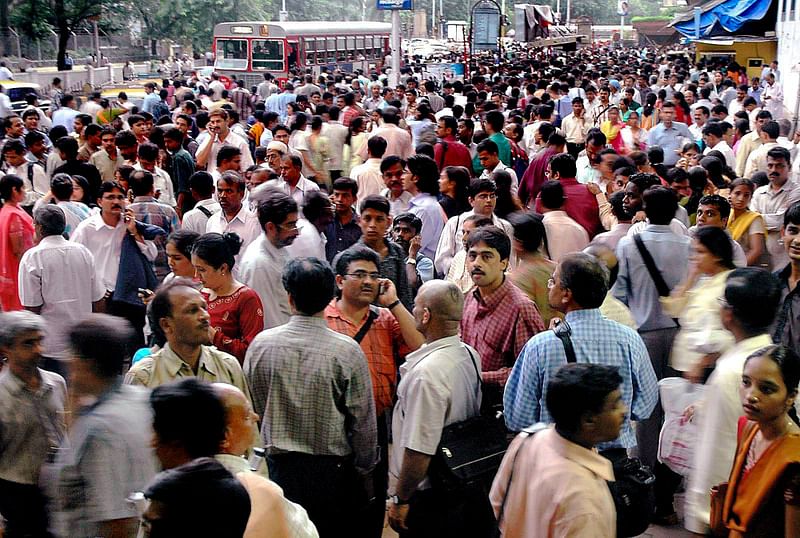- Latest in Politics
- Hits: 235
Why is Manipur Burning ?
Violence keeps erupting in the North Eastern States primarily due to lack of faith and confidence amongst the various tribes of the state.
This fear of the other, runs deep across the tribal communities in the Northeast and has proven to be the root of several inter-community violent clashes and agitations including the Bodo agitation and the students’ agitation of the 1980s in Assam.
We from the armed forces know from our experience that tribals are extremely sensitive to their traditional lands and therefore the root cause behind the violence in Manipur is the demographic situation and its exploitation by politicans.

Demography.
Although there are 16 districts in Manipur, but it is commonly divided into ‘Valley’ and ‘Hill’ districts.
In these hill areas, which comprise the 90% of Manipur’s geographical area, live 15 Naga tribes which are 40% of states population. This has been their traditional Land.
And in the valley districts of Imphal which comprise barely 10% of states land reside the Hindu Meiteis, which are approx. 53% of states population. The Valley includes East Imphal, Imphal West, Thoubal, Bishnupur, and Kakching.
The Meitis being the majority community are certainly better placed in terms of social, political, educational and economic parameters in the state than other tribes. The State Govt is also predominantly Hindu Meitis.
However, the fear amongst all of them , the Tribals as well as the Meiteis, is of losing their traditional lands.
History in Brief.
There is very little known about Manipur due to the absence of written records and also None of the texts are yet subjected to serious critical scrutiny by historians. Manipur’s history is intricately linked to the History of Eastern Kingdoms ; Ahoms, Nagas, other tribes of North East India and even Burma.
However, as per the chronicle of records of kings, maintained by Meiteis, Pakhangpa, a primordial dragon god in Meitei mythology, is credited for having established the Meitei rule by subjugating the local tribes. Meitei being one of the migrant clans, originally named Ningthouja, who gained rulership of certain area and then gradually expanded. During this expansion process they had to fight numerous wars with other tribes. During the reign of King Senbi Kiyamba(1467–1507) the ancient Meitei faith ; SANAMAHISM began to collapse. It was during his reign that the Brahmins started migrating to the kingdom and the worship of the Pheiya (sacred stone from Pong kingdom) commenced as the Hindu God Vishnu. That’s how the Meitei Vaishnavism started. The Kingdom of Pong was an ethnically Tai state that controlled several smaller states along the frontier of what is now Myanmar and Assam.
During the reign of Emperor Pamheiba, the Meiteis were converted(forcibly) from SANAMAHISM into Hinduism. In 1729, the sacred scriptures of Sanamahism were burnt and this event is annually commemorated.
The invaders from further East kept coming particularly from Burma and the Meitei kingdom had to fight numerous wars which resulted into severe losses at times. The Burmese occupied Manipur from 1819 to 1826.
The expansion of Burma under the Konbaung Dynasty brought its frontiers closer to the British East India Company and as a result the British fought three wars with the Burmese empire. In the First Anglo- Burmese war , the British helped prince of Meiti Kingdom to regain his kingdom from the clutches of the Burmese. In this war Burma lost territory that it had captured in Assam, Manipur and Arakans.
Subsequently, the Meitei kingdom became a British protectorate with a British Political agent stationed there.
In the year 1891, due to internal disturbances caused by the family feud for successorship, the historic Anglo-Manipuri war (Manipur's National Liberation Struggle) took place , it resulted in the British victory and so finally Manipur was annexed by British.
During the course of history, Manipur was known by different names, such as, Tilli-Koktong, Poirei-Lam, Sanna-Leipak, Mitei-Leipak, Meitrabak. Even the neighbouring kingdoms called them by different names; The Pong called the area Cassay, the Burmese called them Kathe, and the Assamese Meklee. In the first treaty, signed in 1762, between the British and the king of Meiti kingdom, the kingdom was recorded as Meckley. Bhagyachandra, the then King and his successors issued coins engraved with the title of Manipureshwar, or lord of Manipur and the name Meckley was discarded. The name Manipur means “land of gems”.
After the accession of Manipur to India in 1947, Manipur became a Union territory in 1949 and in 1972 became one of the states.
So, when we dig deeper into the history and geography of this region we find that these hundreds of tribes spill over the borders of these states as the borders of tribal regions could never be clearly demarcated. For instance ; there are numerous Naga tribes residing in Manipur and they had a bloody violent exchange with Kukis in Manipur. Similarly last year the violence erupted between the villagers of Assam and Arunachal Pradesh due to an old border dispute, Bodos of Assam had similarly fought for years to safe guard their traditional lands within Assam. The hilly tracts of Nagaland were captured after a series of expeditions(ten) , undertaken by British army from 1832 onwards till 1922 and even then could not control the warring tribes.
So, it is quite natural that the hilly tribal areas outside the Imphal valley, were never a part of the Meitei kingdom that was based in Valley and those areas were brought into under one administrative unit by the Britishers once they captured the whole region(although the Meiteis would deny that).
Recent Developments.
Because of this fear the govt actions, which is predominantly made up of Meitis are always viewed suspiciously by tribals who make up to almost 40 % of population and live on hills surrounding the valley.
As a result of this fear and lack of faith amongst the tribes the majority Hindu Meiteis have been demanding for ;
One. Grant of Schedule Tribe status so that they are able to maintain their predominance.
Two. In order to safe guard their land they had also demanded Inner Line Permit to put a control on migrant population in the valley. This was granted by the Modi government. This implied that Meiteis Hindus did not want their ancestral lands to be occupied by their own state citizens. Ostensibly this further fuelled the suspicion amongst the tribal population.
Three. The government’s clampdown on reserved and protected forests in the State’s hill areas in the guise of war against drugs has also antagonised the tribes as they feel that they are being persecuted. Despite tribal people’s protests against Govt action the Govt remains unfazed and defiant.
Four. As population is increasing both in tribal as well as in Valley, the land has become important. The tribals tend to spread out into surrounding forest areas, which they consider their historical and ancestral right. This is contested by the government. Similarly, due to the growing population Meiteis, who live in the valleys, are also feeling the pressure because they are not allowed to settle or buy land in the hill(tribal) areas, while tribal people can buy land in the valleys. Interestingly, neither the state govt nor the central govt has any real policy as to how to go about it, as there is lack of transparency and cohesion.
Five. Reportedly, there is also anger within the tribes over the decision of the CM to withdraw the suspension of operations agreement with their armed outfits, like Kuki National Organisation (KNO).
It implies that the state government is no more the part of the ongoing tripartite peace talks between these armed groups. These talks were initiated by the Central Govt prior to the elections of 2017, perhaps to mobilise the support of tribals in its favour and defeat the Congress government in the state. The Kuki-Zo communities as a result felt that they would get some form of self-governance like what the Bodo community was granted within Assam. So, now the message that has been conveyed to the tribal groups by withdrawing from the talks - the majority Meitei community (the chief minister is a Meitei) is opposed to granting any self-governance to the Kuki tribes.
But the final outburst came after the Manipur high court gave a nod to the demand by the majority community(Hindu Meiteis) to be granted the ST Status . The simmering anger within the tribal communities busted out in open due to the fear of losing their constitutional safeguards to the Meiteis.
Not only that, the High Court pulled up the All Tribal Students Union of Manipur (ATSUM) and the Chairman of the Hill Areas Committee (HAC) of the state assembly for criticising its order. The tribal leaders and student body heads perhaps felt that the HC notices are an indication of; the court’s support to the Meiteis.
The Protest turned Violent.
As a result of this fear and frustration brewing up for some years now because of the reasons enunciated above, the ATSUM had organised the tribal solidarity march in all hill districts of the state on May 3. As the tempers were running high the protest turned violent, vehicles, houses, churches, schools were burnt and almost 54 people lost their lives and 14000 people reportedly, have been rescued and moved to safe zones.
In short the tribals are attacking the Meiteis in Hills and the Meiteis are attacking tribals in Valley.
As the violence escalated, the Centre invoked Article 355 of the Constitution. Army has done a flag march in affected areas, and other para military forces have been moved into the affected areas.
Conclusion.
The peace in this region has come the hard way. The gallant soldiers of the Indian army fought against the militants of these tribes in these rugged mountains and dense jungles for decades, the Central Govt must not let it go waste just for the sake of power politics.
The endeavour of the Govts should be to minimise the discord in the society and avoid creating a huge force of disgruntled elements in the society. At the times of crisis all these disgruntled elements may unite and the whole edifice created by our forefathers can fall like a pack of cards.
Watch out! Our adversaries are observing us
Add a comment






